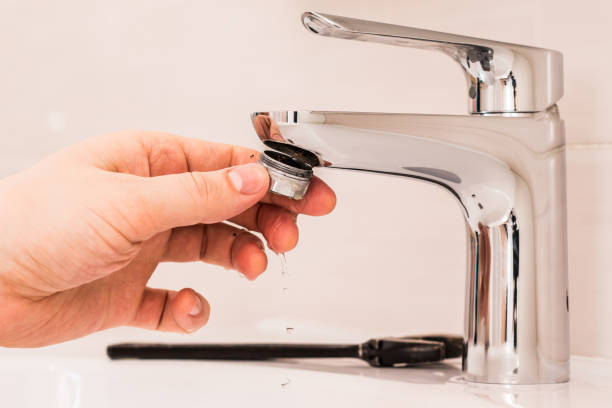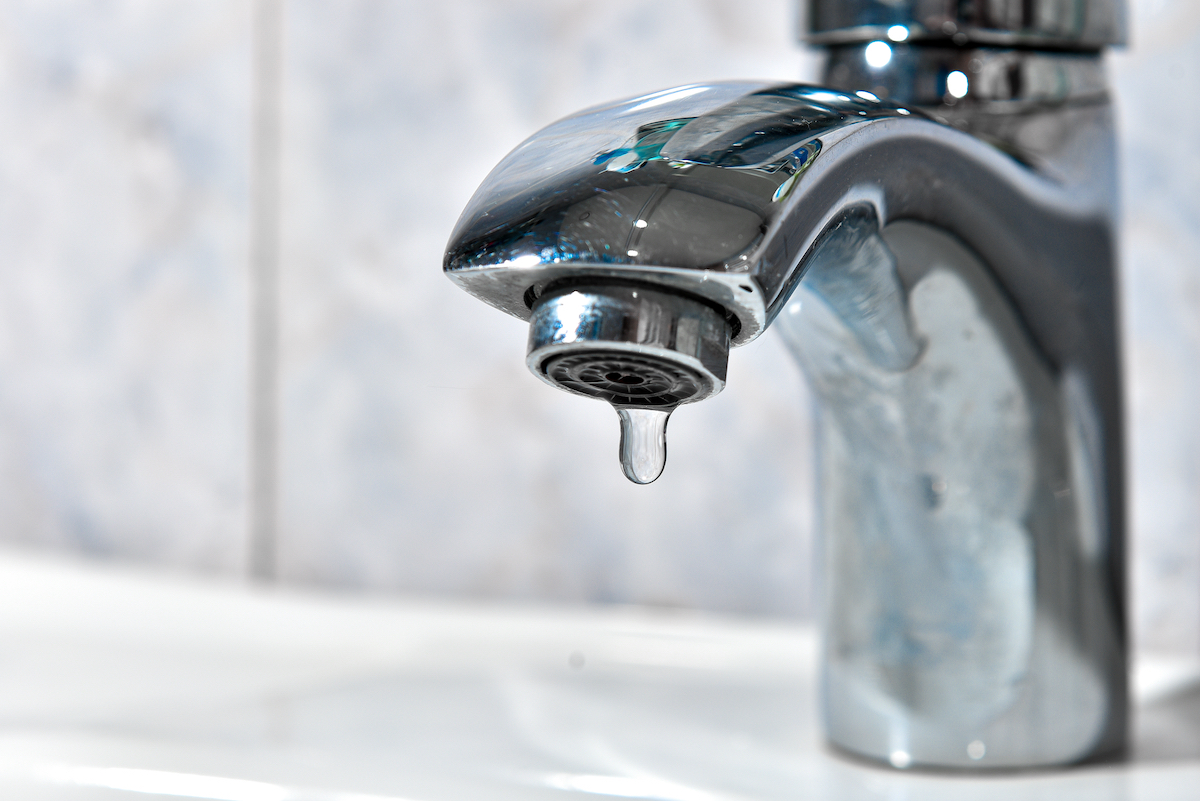When It's Vital to Fix a Broken Faucet
When It's Vital to Fix a Broken Faucet
Blog Article
The publisher is making a few great pointers on Why Are My Faucets Dripping (And Can I Fix It Myself)? as a whole in this article followed below.

Dripping taps may seem like a small trouble, but their influence exceeds just the nuisance of the sound. From drainage to incurring unneeded monetary prices and health and wellness threats, neglecting a dripping faucet can lead to different consequences. In this write-up, we'll delve into why it's vital to address this typical household problem promptly and successfully.
Wastage of Water
Ecological Influence
Leaking taps add considerably to water wastefulness. According to the Environmental Protection Agency (EPA), a solitary tap dripping at one drip per second can throw away more than 3,000 gallons of water annually. This not just strains water resources yet additionally affects environments and wild animals dependent on them.
Financial Expenses
Raised Water Bills
Past the ecological influence, dripping faucets can blow up water costs substantially. The built up wastefulness with time translates into greater energy expenditures, which can have been avoided with timely repair work.
Prospective Property Damage
Additionally, long term trickling can lead to damage to fixtures and surfaces surrounding the tap. Water build-up can trigger discoloration, deterioration, and even architectural problems if left neglected, resulting in extra repair work costs.
Wellness Worries
Mold and Mold Development
The continuous visibility of moisture from a leaking tap develops an optimal setting for mold and mold development. These fungis not just endanger indoor air quality but likewise position health risks, particularly for individuals with breathing problems or allergic reactions.
Waterborne Illness
Stagnant water in dripping faucets can come to be a breeding ground for bacteria and other pathogens, boosting the risk of waterborne diseases. Contaminants such as Legionella bacteria thrive in stationary water, potentially resulting in severe ailments when ingested or inhaled.
Do it yourself vs. Specialist Repair
Benefits and drawbacks of DIY Repair Work
While some may attempt to take care of a dripping faucet themselves, do it yourself repairs feature their own set of challenges. Without correct understanding and tools, DIY efforts can exacerbate the issue or result in insufficient fixings, extending the trouble.
Advantages of Employing a Professional Plumber
Working with a specialist plumber makes certain that the underlying source of the trickling tap is dealt with efficiently. Plumbers have the experience and equipment to identify and repair tap concerns efficiently, saving time and decreasing the danger of more damage.
Step-by-Step Guide to Repairing a Dripping Faucet
Tools Required
Prior to attempting to deal with a trickling faucet, collect the required devices, including an adjustable wrench, screwdrivers, substitute parts (such as washing machines or cartridges), and plumber's tape.
Common Tap Issues and Their Solutions
Identify the type of tap and the specific problem creating the drip. Usual problems include worn-out washing machines, rusty valve seats, or damaged O-rings. Refer to producer directions or on-line tutorials for detailed support on fixings.
Preventive Measures
Regular Maintenance Tips
To prevent leaking taps, perform routine maintenance such as cleaning aerators, checking for leakages, and changing damaged parts promptly. In addition, think about mounting water-saving devices or upgrading to more efficient fixtures.
Significance of Prompt Repair Works
Attending to trickling faucets as soon as they're noticed prevents more water wastefulness and possible damages, inevitably conserving both water and cash over time.
Effect On Property Worth
Assumption of Well-Maintained Building
Keeping a residential property in good condition, consisting of resolving upkeep problems like dripping faucets, boosts its regarded worth and value among possible customers or lessees.
Influence on Resale Worth
Qualities with well-maintained plumbing components, including faucets, command greater resale worths in the realty market. Addressing dripping faucets can add to a positive impact during residential or commercial property inspections and arrangements.
Ecological Responsibility
Individual Payment to Conservation
Taking duty for taking care of leaking taps lines up with more comprehensive efforts towards water conservation and ecological sustainability. Every person's actions jointly make a significant influence on preserving priceless resources.
Lasting Living Practices
By prioritizing timely repairs and embracing water-saving habits, people contribute to sustainable living techniques that benefit both existing and future generations.
Conclusion
Resolving a dripping tap goes beyond mere comfort; it's an important action toward saving water, lowering financial prices, and safeguarding wellness and residential or commercial property. Whether via DIY repairs or professional aid, acting to fix leaking taps is a small yet impactful method to promote responsible stewardship of sources and add to a healthier, more sustainable future.
How to Fix a Dripping or Leaky Faucet
A leaking faucet is one of the most common problems that homeowners encounter, but it being commonplace doesn’t make it any less annoying. The constant drip drip drip of a leaking bathtub faucet, showerhead, or sink tap can disturb your home’s serenity. Left neglected, a dripping faucet can also result in higher water bills and discoloration or mold growth in your sink or plumbing fixtures.
Fortunately, you don’t have to be a trained plumber to know how to stop a dripping faucet. With some basic tools, replacement parts, and a little patience, leaky faucet repair is a breeze. In this article, we’ll explain what causes dripping faucets and how you can fix them.
What Causes a Leaking Faucet?
Kitchen and bathroom faucets come in all manner of designs, but most involve some combination of valves, O-rings, seals, and washers. The O-ring is usually the weakest link, but any one of these pieces can wear down over time. Heat, moisture, temperature fluctuations, minerals, mold, and movement can contribute to warping and corrosion, breaking the watertight seal. This just comes with the territory of being a homeowner. Everything is always subject to wear and tear, and some component parts of your appliances and fixtures need to be replaced on occasion. At least replacement O-rings are cheap!
More rarely, dripping faucets can be a symptom of excessively high water pressure. Were this the case in your home, you would probably notice that the leak is not isolated to one faucet. Water pressure issues are harder to resolve on your own. We recommend contacting a professional plumber if you suspect your water pressure is too high.
How to Fix a Dripping Faucet
Pipe wrench or monkey wrench Allen wrench set Screwdrivers Old towel or rag Shut off the water.
Before you do anything, you need to turn off the water to keep from drenching your kitchen or bathroom. You should find a valve under the sink and against the wall. Once you’ve turned this valve, try turning the faucet on to confirm that the water source has been cut off.
If you can’t locate your local valve for the faucet you’re working on, you can always shut off the water to the house at the main valve. Of course, this will prohibit anyone from using the sinks, showers, or toilets while you’re working on the faucet that’s giving you trouble.
Plug or block the drain.
You’ll be disassembling the faucet and removing some small bits of hardware. Plug the drain with a stopper or rag to avoid the possibility of a small screw falling into your P-trap.
Take apart the faucet assembly.
There are several varieties of kitchen and bathroom faucets, each with its own manner of assembly. For detailed instructions on how to disassemble your faucet, you can refer to the fixture’s manual or contact the manufacturer. If you know whether you have a ball, disc, cartridge, or compression faucet, you can find detailed schematics online.
In general, you need to begin by removing the faucet handles. You might notice a small screw that you’ll need to remove with a screwdriver or Allen wrench. If you don’t see any visible securing hardware, it’s likely hidden under a decorative cap that can be unscrewed or popped off with flathead screwdriver.
Remove each piece methodically, consulting a schematic when necessary. Take notes or arrange the pieces in such a way to make it easier to correctly reassemble the faucet later.
Remove the cartridge.
Once you’ve removed the handles and securing hardware, you should be able to remove the valve cartridge or stem. Some cartridges will slide right out. Other faucet models will require you to loosen a nut with a pipe wrench before you can remove the valve stem.
Examine the exposed hardware.
With the cartridge or stem removed, inspect the component parts. Check the rubber O-rings for wear and tear. Also examine the seat washer for corrosion or other damage. These pieces are usually the responsible parties for a dripping faucet, but it’s worth inspecting the other component parts while you have the faucet disassembled.
Find replacement parts.
Once you’ve identified which faucet component has failed, find an identical replacement. Your local hardware store should have O-rings, seat washers, and other standard components in stock. If you have a luxury or uncommon faucet, you may have to contact the manufacturer for a replacement part.
It’s a good idea to take your old parts with you to the hardware store so you can compare them with the store’s inventory and be sure you’re purchasing the correct replacement.
Reassemble the faucet.
With your new parts in hand, reconstruct the faucet and handles. Don’t be tempted to overtighten screws or nuts. You might think this could create a better seal, but it can instead damage or bend a delicate part of the assembly and create a new problem for you.
Turn on the water and test the faucet.
The only thing left to do is test your work. Unplug the sink, turn the water back on, and try the faucet. Congratulate yourself on a job well done!
https://www.libertyhomeguard.com/how-to-fix-a-dripping-or-leaky-faucet/

We hope you enjoyed reading our section on How to Fix a Dripping or Leaky Faucet . Thank you so much for taking time to browse our article. Are you aware of somebody else who is involved in What Causes Leaky Faucets & How To Fix Them? Feel free to promote it. Thanks for being here. Come back soon.
Report this page